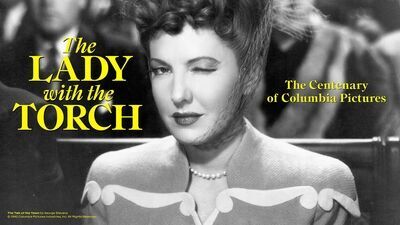“The Killer That Stalked New York” (1950)

Let’s just say after COVID — I use the word “after” very loosely — Earl McEvoy’s pandemic thriller “The Killer That Stalked New York” hits a bit differently. Based on a 1948 Cosmopolitan article by Milton Lehman, it follows Sheila Bennet (Evelyn Keyes) — who has recently returned from Cuba, where she illicitly shipped stolen diamonds in the mail to her no-good husband Matt Crane (Charles Korvin). When she returns, not only is she being trailed by a Treasury agent, she also finds Matt in a relationship with her younger sister Francie (Lola Albright). To make matters worse, she is gravely ill. Sheila seeks help from Dr. Ben Wood (William Bishop). At his office she meets a young girl, who, with through her contact with Sheila, contracts smallpox. The disease begins to spread across New York City, spurring Ben and the Department of Health to search for patient zero: Sheila. This is a pro-vaccine film, one that captures an appropriately shaken government ready to spring into action to prevent further unnecessary death. While the film is a socially conscious work, as Khoshbakht observes in his essay in The Lady With The Torch, it also represents how Columbia produced directors and stars. Its director McEvoy moved up from second unit work to helm this picture, one of his few directorial efforts.
“Pickup” (1951)

I’ve slowly been working my way through Hugo Haas’ directed works, previously watching “Bait,” “One Girl’s Confession,” and “Hold Back Tomorrow.” So I was immediately keen to catch “Pickup,” his directorial debut in America (he previously enjoyed a sizable film career in the Czech Republic). Along with directing, Haas self-produced, co-wrote with Arnold Phillips, and starred in the picture as Jan Horak — a tender-hearted railroad dispatcher who attends a carnival looking for a dog but comes home married to the gold digging Betty (Beverly Michaels). Jan is too sweet of a man to see that Betty, who’s miserable living in the middle of nowhere at his depot, not only doesn’t love him, but is smitten by his young assistant Steve (Allan Nixon). When Jan suddenly goes deaf, Betty sees the disability as her chance to steal his money and bolt. Her plan goes awry, however, when Jan, after he miraculously regains his hearing, pretends to be deaf. “Pickup” features an impressive sound design, relying on high-pitch squeals to unmoor the viewer, and excels at a psychological seediness that is lean and mean yet filled with immense heart and warmth.
“The Glass Wall” (1953)

Playing at Locarno for the first time since it won the Golden Leopard in 1951, Maxwell Shane’s “The Glass Wall” is a vexing tale that puts America’s broken immigration system under the spotlight. Peter Kuban (Vittorio Gassman) is a Holocaust survivor who has stowed away on a ship heading to New York City. Once in America, he is detained, where he tells the story of how he helped save an American G.I. during the war. Unfortunately, he only knows the soldier’s first name — Tom (Jerry Paris) — and that he’s a clarinet player living in New York. None of those details are enough to guarantee his place in America; he needs to find the real Tom within 24 hours or he’ll be deported. Peter breaks out of custody toward Time Square to search for Tom, where, along the way, he meets helpful souls like Maggie Summers (Gloria Grahame) and a burlesque dancer named Nancy (Robin Raymond).

